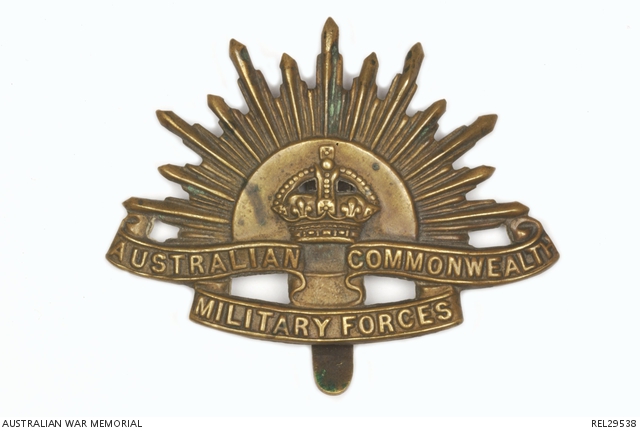Personal Details
Born: 7 January 1892 in Whitchurch, Shropshire.
Family: He was the youngest, with his twin brother John, of eight children born to George Hughes, a shoemaker, and his wife Elizabeth. He married Lily Maria Edith Rundle on 24 May 1919 at Lambeth Registry Office, London. It is possible that the couple had a son, James R, born in 1920 in Hartley Whitney, Hampshire.
Residence: He lived in 1901 with his parents and siblings at 43 Claypit Street, Whitchurch, and this is the address shown on the 1919 Absent Voters’ Register for him. At some point prior to September 1915 he travelled to Australia, enlisting with the Australian Imperial Force. At the time of his marriage his address was 67 Horsford Road, Brixton Hill, London, but we know that his discharge was in Australia in 1920. Two addresses are given in the military records for his time in Australia: 29 Northumberland Road, Auburn, New South Wales and Kenley, Penrose, Southern Line, New South Wales.
Employment: After leaving Whitchurch Grammar School in 1909 he became a student teacher at the Whitchurch Wesleyan Elementary School. He showed his occupation as grocer in 1915. The Australian electoral rolls show his occupation as orchardist.
Died: Not known
Military Details
Regiment: Australian Imperial Force
Rank: Sergeant
Service Number: 4382
Date of Enlistment: 13 September 1915
Date of Discharge: 22 May 1920
Reason for Discharge: Not known
James was awarded the Campaign Medals (British War Medal, and Victory Medal).

The British War Medal (also known as 'Squeak') was a silver or bronze medal awarded to officers and men of the British and Imperial Forces who either entered a theatre of war or entered service overseas between 5th August 1914 and 11th November 1918 inclusive. This was later extended to services in Russia, Siberia and some other areas in 1919 and 1920. Approximately 6.5 million British War Medals were issued. Approximately 6.4 million of these were the silver versions of this medal. Around 110,000 of a bronze version were issued mainly to Chinese, Maltese and Indian Labour Corps. The front (obv or obverse) of the medal depicts the head of George V. The recipient's service number, rank, name and unit was impressed on the rim.
The Allied Victory Medal (also known as 'Wilfred') was issued by each of the allies. It was decided that each of the allies should each issue their own bronze victory medal with a similar design, similar equivalent wording and identical ribbon. The British medal was designed by W. McMillan. The front depicts a winged classical figure representing victory. Approximately 5.7 million victory medals were issued. Interestingly, eligibility for this medal was more restrictive and not everyone who received the British War Medal ('Squeak') also received the Victory Medal ('Wilfred'). However, in general, all recipients of 'Wilfred' also received 'Squeak' and all recipients of The 1914 Star or The 1914/1915 Star (also known as 'Pip') also received both 'Squeak' and 'Wilfred'. The recipient's service number, rank, name and unit was impressed on the rim.

